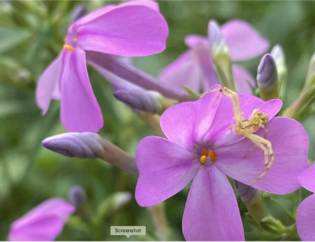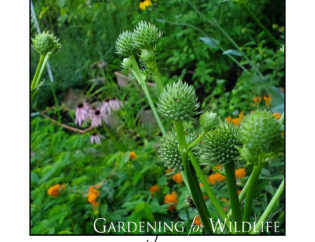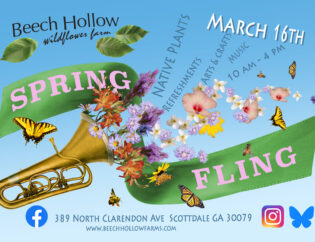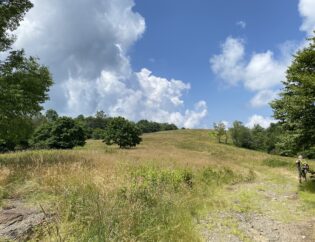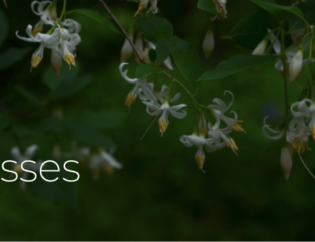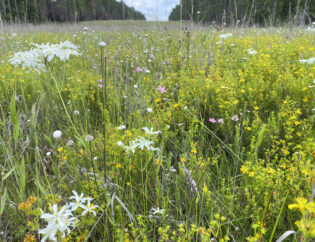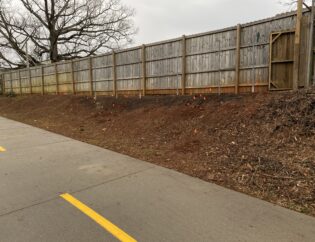The ‘discovery’ of the Americas and subsequent exploration, colonization and modernization of the past 500 years has had dramatic effects on the landscape to say the least. Plants from Asia, Europe, Africa, and South America are now commonly found all over North America. Some require great care to sustain here like the tropical orchids blooming in the hothouse at the Atlanta Botanical Gardens on a cold February day, and some, like Chinese Privet, are running wild throughout the land. By studying historical sources from the beginnings of this era of intercontinental plant exchange we can get an idea of the plant communities that were here before this land was named ‘America.’

Descriptions and plant specimens coming back from the New World excited Europeans and created a huge demand for new and interesting plants. Explorers looking for gold were often disappointed in that pursuit, but found instead an entirely new set of crops being grown by the indigenous peoples and forests full of exotic trees and flowering shrubs. There were no potatoes in Ireland, no tomatoes in Italy, no sunflowers in Russia, and no maize, vanilla, or tobacco in anywhere in Europe before transatlantic ships established regular trade routes in the 1600s. Colonists began to populate the Eastern seaboard of North America in significant numbers through the late 1600s and in one of those colonies, Pennsylvania, resided a family named ‘Bartram.’ Through the travels, writings, plant specimen collections, and drawings produced by several generations of this family we have very rich descriptions of the plants and animals of Eastern North America as they were in their near primeval state.

John Bartram (1699-1777) was a third generation Pennsylvania Quaker who has been called the “Father of American Botany” and was one of the first practicing Linnaean botanists in North America. Linnaeus himself said that Bartram was “greatest natural botanist in the world.” He established the first proper botanical garden in North America just outside of Philadelphia, and you can still visit it to this day to learn about the plants he collected and propagated. “Bartram Boxes” were crates he packed with hundreds of varieties of seeds that helped to establish his thriving plant export business and provided the British elite with novel plants to populate their gardens. Bartram traveled extensively in search of new plants and through his notes and diaries we are able to get an idea of the diverse communities of plants that were thriving on the continent in the mid-eighteenth century. John Bartram was also good friends with Benjamin Franklin, and may have planted the idea in his head for the American Philosophical Society. At the very least he was a founding member and helped shape the ideas of the burgeoning revolution.
William Bartram (1739-1823) was the third son of John, and went on to follow in his father’s footsteps by exploring the American Southeast and writing of its natural wonders while collecting and classifying the plants he encountered. His writings about his journeys through what are now North and South Carolina, Georgia, Florida, Alabama, Mississippi, and Louisiana from 1773-1777 were compiled by Francis Harper in “The Travels of William Bartram.” Bartram’s often poetic descriptions and Harper’s detailed annotations with modern place and plant names that accompany them provide a vivid and verdant picture of the places he went and the plants, animals, and humans he encountered.
I’ve been reading his writings off and on for the past few years, and aside from the descriptions of 15 foot long alligators trying to sink his canoe in Lake George near what is now Orlando, there is one passage that really sticks with me. It describes a forest northwest of Augusta, near the present day site of Beech Hollow Farm. First, a picture:
This is one of the biggest trees in the Beech grove here. The tape is at 24″, so let’s call it 26 inches in diameter just for a reference while you read the following passage from William Bartram:
“…We entered an extensive fertile plain, bordering on the river and shaded by trees of vast growth, which at once spoke of its fertility. Continuing some time through these shady groves, the scene opens, and discloses to view the most magnificent forest I had ever seen. We rise gradually a sloping bank of about twenty or thirty feet elevation and immediately entered this sublime forest; the ground is perfectly a level green plain, thinly planted by nature with the most stately forest trees, such as the gigantic Black Oak (Q. tinctora), Liriodendron, Juglans nigra, Planatus, Juglans exalta, Fagus sylvatica, Ulmus sylvatica, Liquid-amber styraciflua**, whose mighty trunks, seemingly of an equal height, appeared like superb columns. To keep within the bounds of truth and reality, in describing the magnitude and grandeur of these trees, would I fear, fail of credibility; yet, I think I can assert that many of the black oaks measured eight, nine, ten, and eleven feet diameter five feet above the ground, as we measured several that were thirty feet girt, and from hence they ascend perfectly straight, with a gradual taper, forty or fifty feet to the limbs…” (“Travels”, p. 24)
**(Black Oak, Tulip Poplar, Black Walnut, Sycamore, Shagbark Hickory, Beech, Elm, Sweet Gum)
So, his low estimate on the Oaks is 4 times the diameter of our biggest Beech. In case you have trouble visualizing that I can help through the miracle of digital photo manipulation:
And he didn’t say he saw just one magnificent giant tree. It’s an entire forest. And he even has to qualify his description and then basically says he’s low-balling it because you wouldn’t believe the actual truth. Like I said, it sticks with me as an idealistic goal when thinking about conservation and restoration.
What did this land look like 240 years ago? What will it look like 240 years from now?

